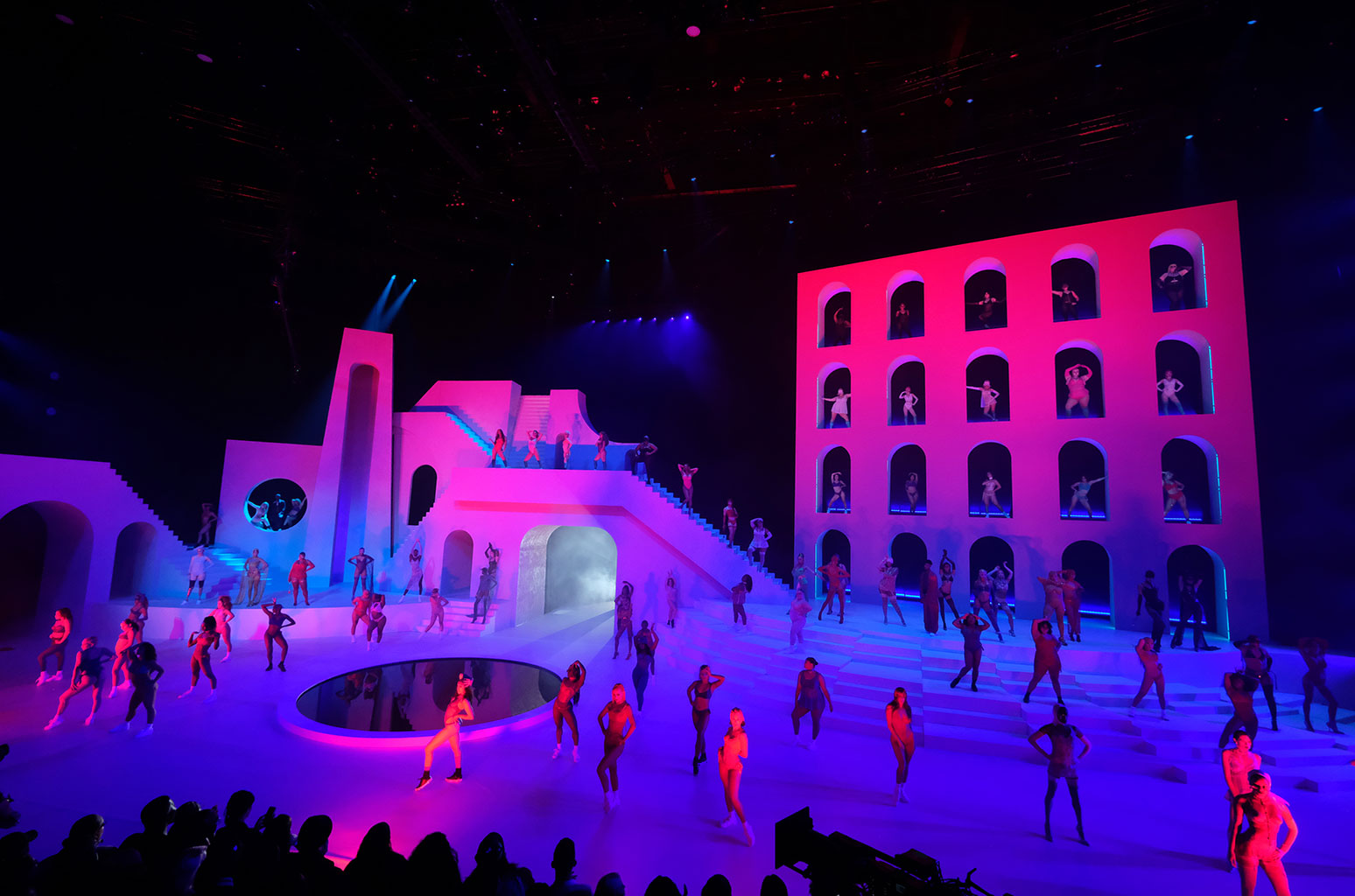| Brought to you by: |
Mirrored acrylic and strategic lighting transform a temporary space at 50 Walker Street in New York
A collaboration between Nicola Formichetti, fashion director for Lady Gaga and creative director for Mugler, and Gage/Clemenceau Architects, launched Boffo Building Fashion’s second annual installation series on September 8. A reflection, literally, of Formichetti’s work, the two-week installation is a kaleidoscope of nearly 600 mirrored facets that create a 360-degree reflective environment in which to showcase limited edition Mugler fashions and other merchandise from emerging designers. With help from the series’ sponsors and the fabrication lab at Yale, where Mark Foster Gage is an assistant dean, the design team created a new way to see the store’s stock by “dematerializing the fashion into a pattern on the walls,” said Gage.
- Fabricators Gage/Clemenceau Architects
- Architect Gage/Clemenceau Architects
- Location New York, New York
- Status Complete
- Materials Mirrored acrylic, lightweight composite structural backing, lighting, bent aluminum clips
- Process Autodesk, CNC milling
Building Fashion material sponsor Architectural Systems Inc., consulted with the architects once their concept of a faceted stage—one on which perhaps even Lady Gaga would perform—had taken shape in Autodesk (the series software sponsor). The company was able to supply 200 sheets of 39-by-104-inch mirrored acrylic with three separate performance characteristics: one set, for the floor, with high abrasion resistance, and two surfaces with slightly different reflective qualities for the walls and ceiling. The company’s vice president of project development, Bob Koenigsberg, consulted on CNC cutting speeds before the sheets were milled. Additionally, the fabrication team, which included a handful of Yale students and the architects, specified the sheets with a pressure-sensitive, self-adhesive backing that allowed them to be mounted onto lightweight composite structural backing.
“The way we composited it together gave it a high level of rigidity so the mirrors didn’t distort and turn the space into a funhouse,” said Gage. His new book, a collaboration with Greg Lynn, is entitled “Composites, Software and Surfaces: Towards a High Performance Architecture,” and this project was a way to further explore the premise that composite surfaces can be superior to monolithic ones in architecture.
Ranging in length from 12 inches to 144 inches, each mirrored facet meets the other facets at a specific angle. The team specified nearly 1,800 custom aluminum clips from a hotrod manufacturer, who pre-bent each fastener to a specific angle and numbered them for installation. “It popped into shape like a 3-D puzzle,” said Gage. “There was no extra bending.” The walls and ceiling of the store were pre-assembled into 4 large pieces each weighing nearly 200 pounds and hoisted into place with pulleys, then tied to hidden steel scaffolding with wires.
Lighting added the final layer of theatricality to the space. Lighting designer Focus Lighting worked with donated equipment from High End Systems and Philips to program a lighting sequence with an effect much like that of a rock concert. “Because we are shooting light onto mirrored wall, it bounces until it hits a surface that is light-able—a person’s face, one of Nicola’s fashions,” said Focus principal Brett Andersen. High End Systems FQ-100 Fog Generators send a fine haze into the air, adding more movement to the prismatic room. Before he began architectural lighting, Andersen worked in theater, and the project’s tight timeframe—his team was brought on board just before Labor Day—reminded him of the old days, and of the fun of creating something temporary. “Shows you designed in a weekend were always more exiting.”








